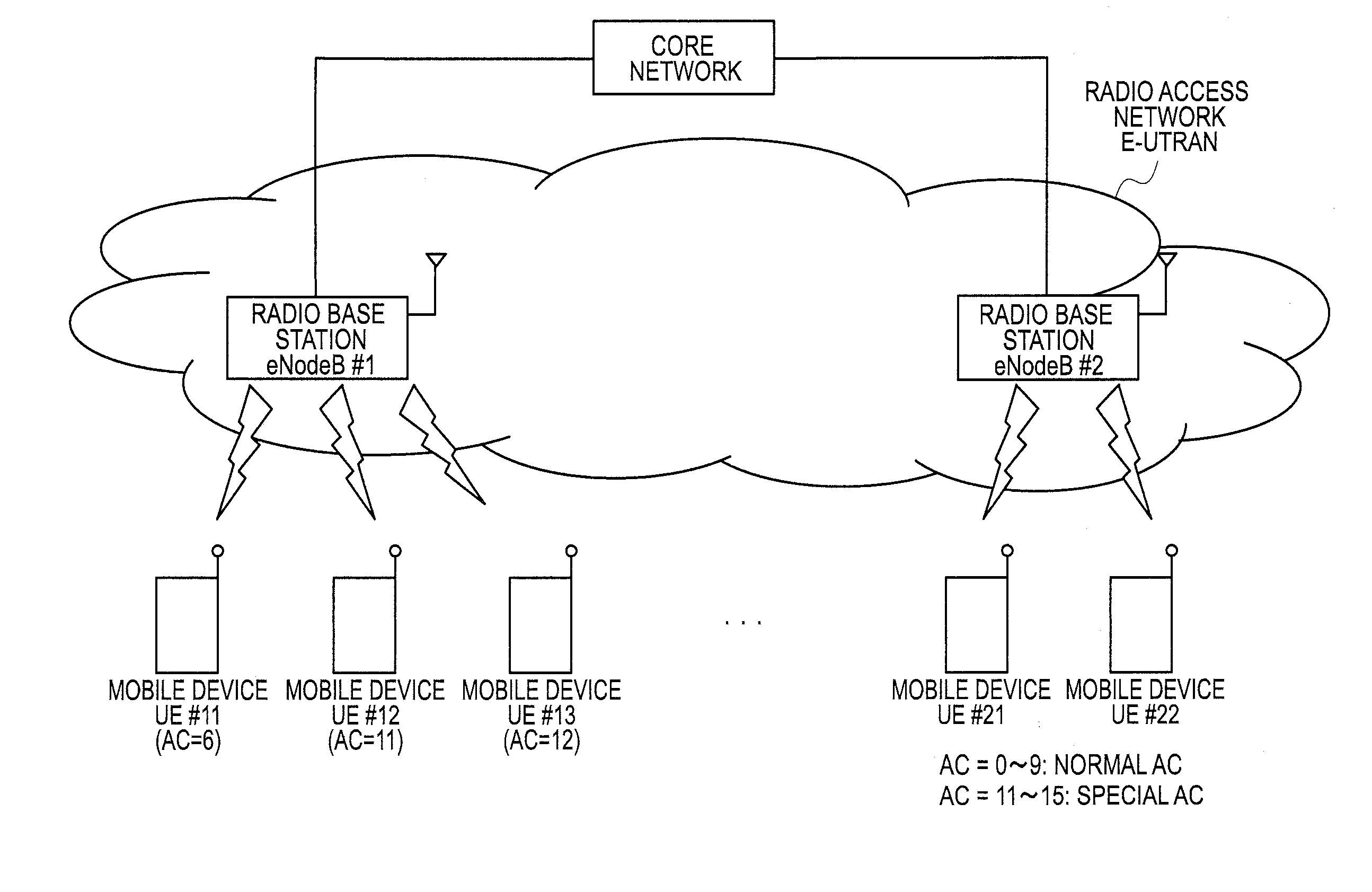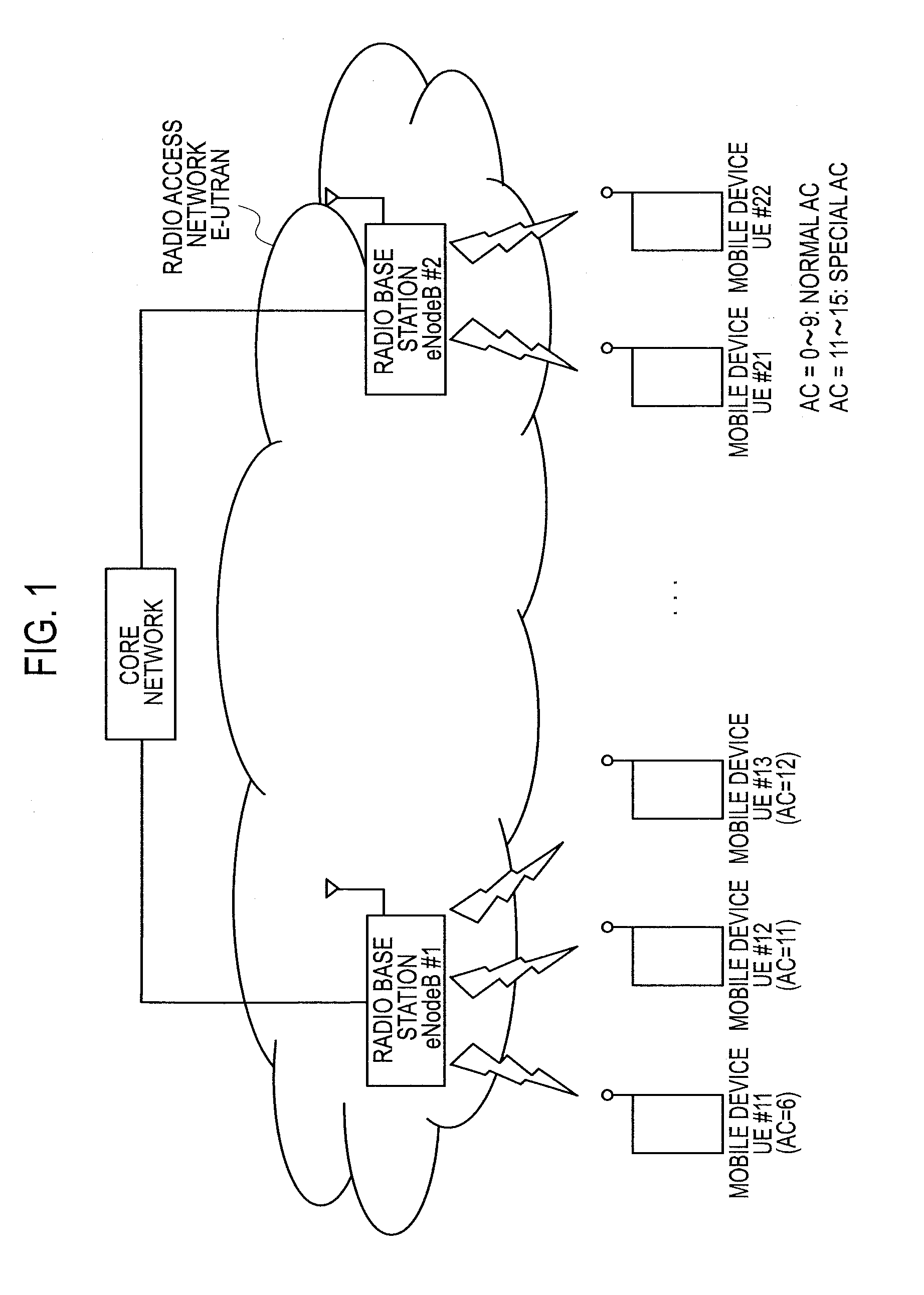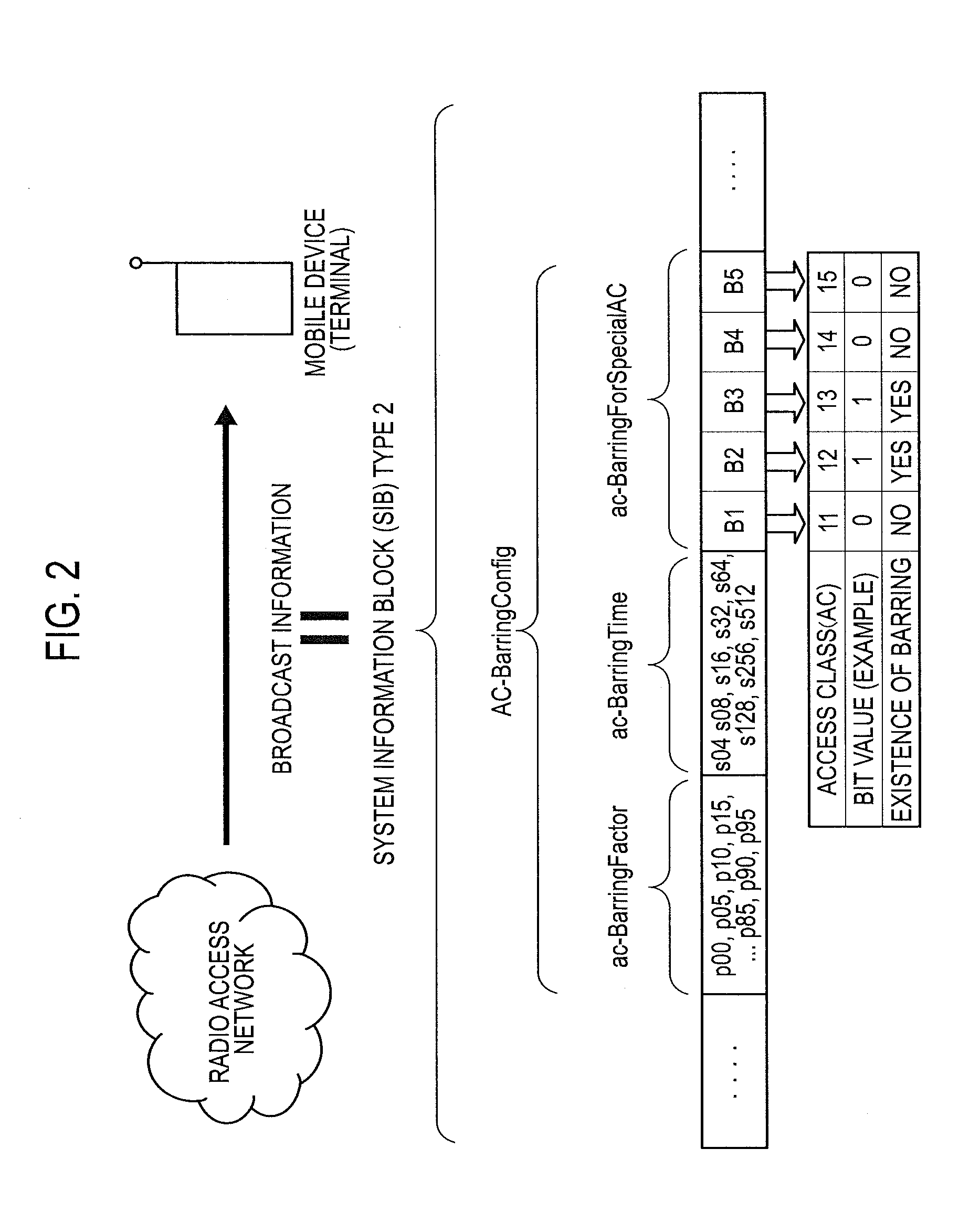Method of barring network access, mobile device and processor
a network access and mobile device technology, applied in the direction of assessing restrictions, substation equipment, electrical appliances, etc., can solve the problems of burning battery power, preventing the same ac from being allowed for a long time,
- Summary
- Abstract
- Description
- Claims
- Application Information
AI Technical Summary
Benefits of technology
Problems solved by technology
Method used
Image
Examples
Embodiment Construction
[0081]Hereinafter, embodiments of the present invention will be described with reference to FIGS. 1 to 6.
[0082]FIG. 1 is a diagram illustrating an overall configuration of an LTE radio network system. The LTE radio access network is called E-UTRAN, and is located between a core network and a mobile device user equipment (UE). The E-UTRAN is configured such that a plurality of eNodeBs that function as a radio base station and a radio network control device is arranged.
[0083]In the example of FIG. 1, normal type access classes (normal AC) are AC=0 to 9, special type access classes (special AC) are AC=11 to 15, a UE#11 belongs to AC=6 (normal), a UE#12 belongs to AC=11 (special: for operators), and a UE#13 belongs to AC=12 (special: for police services). The UE#12 and UE#13 may have AC=5 and 3 (normal) respectively, in addition to AC=11 and 12, for example. If they have special ACs, existence and a form of access barring can be determined regardless of which normal AC they belong to.
[0...
PUM
 Login to View More
Login to View More Abstract
Description
Claims
Application Information
 Login to View More
Login to View More - R&D
- Intellectual Property
- Life Sciences
- Materials
- Tech Scout
- Unparalleled Data Quality
- Higher Quality Content
- 60% Fewer Hallucinations
Browse by: Latest US Patents, China's latest patents, Technical Efficacy Thesaurus, Application Domain, Technology Topic, Popular Technical Reports.
© 2025 PatSnap. All rights reserved.Legal|Privacy policy|Modern Slavery Act Transparency Statement|Sitemap|About US| Contact US: help@patsnap.com



